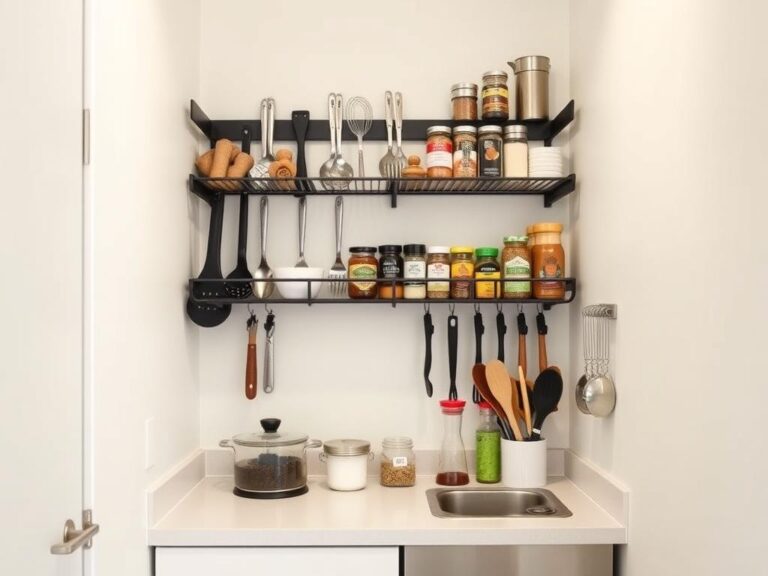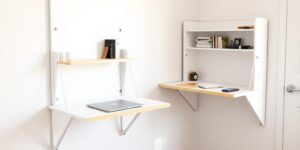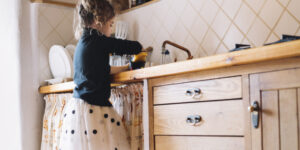Dorm bathroom hacks for shared spaces
Discover essential Dorm bathroom hacks for shared spaces. Get our top tips for a stress-free bathroom experience in dorms.
College life brings new adventures, including the reality of using group restrooms. Many students experience these shared facilities for the first time when moving into campus housing. Though initially intimidating, simple preparation transforms this necessity into a manageable routine.
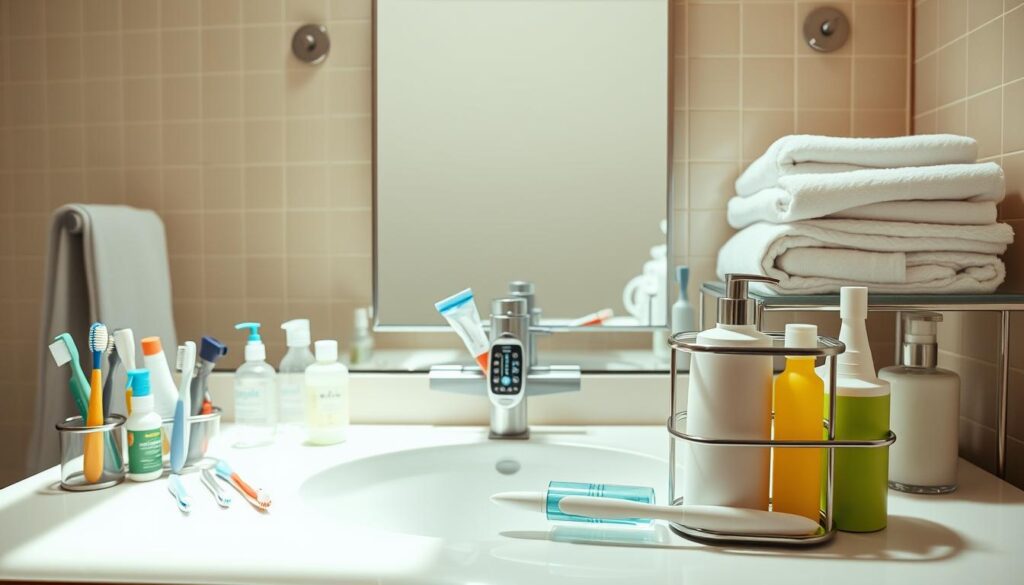
Morning rush hours and late-night routines mean these areas serve dozens daily. Organization becomes critical when storing toiletries or claiming shower time. A well-stocked caddy with travel-sized products saves space and prevents clutter.
Respectful habits make communal living smoother for everyone. Wiping counters, disposing of trash properly, and keeping personal items contained show consideration. Establishing clear communication with hallmates about schedules avoids conflicts during busy periods.
Key Takeaways
- Group restrooms require adjustment but become routine with preparation
- Portable organizers maximize limited storage areas
- Cleaning up after use maintains pleasant conditions for all
- Coordinating schedules reduces congestion during peak times
- Travel-sized products simplify daily routines
Overview of Shared Dorm Bathrooms
Navigating communal facilities in student housing presents unique daily hurdles. These high-traffic areas demand creative solutions to balance personal needs with group dynamics. A thoughtful approach helps transform chaotic environments into functional zones.
Understanding the Challenges
Residence hall restrooms often accommodate 10-40 users daily. Morning rushes create bottlenecks as residents juggle classes and personal care. Limited counter space leads to cluttered surfaces while shower scheduling conflicts disrupt routines.
Temperature disagreements and slippery floors add complexity. Mirror access becomes particularly contentious during prime grooming hours. These factors test patience and require adaptable strategies.
What Else Would You Like to Know?
Choose below:
Benefits of a Well-Organized Space
Strategic planning creates noticeable improvements in shared environments. Designated storage areas prevent item loss and speed up routines. Clear communication about cleaning responsibilities fosters consistent upkeep.
| Common Challenges | Organizational Benefits |
|---|---|
| Peak hour congestion | Faster morning routines |
| Limited storage areas | Reduced misplaced items |
| Inconsistent cleanliness | Improved hygiene practices |
| Mirror space competition | Smoother group coordination |
Residents who prioritize order often inspire others to follow suit. This mutual effort strengthens community ties and makes campus living more enjoyable. Simple systems create lasting positive impacts beyond the washroom.
Key Essentials in a Dorm Bathroom
Smart preparation transforms chaotic group facilities into functional personal care stations. Selecting the right tools streamlines daily routines while respecting communal needs. These practical solutions address space constraints and hygiene priorities in high-traffic environments.
Shower Caddy and Tool Organization
A waterproof shower caddy becomes your mobile command center. Mesh designs outperform solid containers by allowing airflow – reducing mildew risks from trapped moisture. Designate compartments for shampoo, body wash, and grooming tools to eliminate frantic searches during time-crunched mornings.
Essential items like travel-sized toothpaste and razors stay secure yet visible. One student notes: “Quick-dry materials saved me from weekly deep cleans – just rinse and go.” This approach minimizes counter clutter and keeps shared surfaces available for others.
Portable Laundry Bag Advantages
Collapsible fabric bags solve two problems: damp towel storage and floor clutter. Their breathable construction prevents musty odors better than plastic hampers. Lightweight handles make trips to laundry rooms effortless – no dragging bulky baskets down hallways.
Consider these benefits:
- Compact design tucks into narrow gaps between furniture
- Separate compartments for clothes and linens
- Machine-washable materials maintain freshness
Strategic organization creates smoother transitions between showering, dressing, and studying. When every student maintains their essentials, shared areas remain functional for all users.
Shower Safety and Hygiene Tips
Shared shower spaces demand proactive measures to stay healthy and safe. Unlike private home setups, these high-traffic areas expose users to various germs on surfaces and floors. Proper footwear becomes your first defense against infections while maintaining personal comfort.
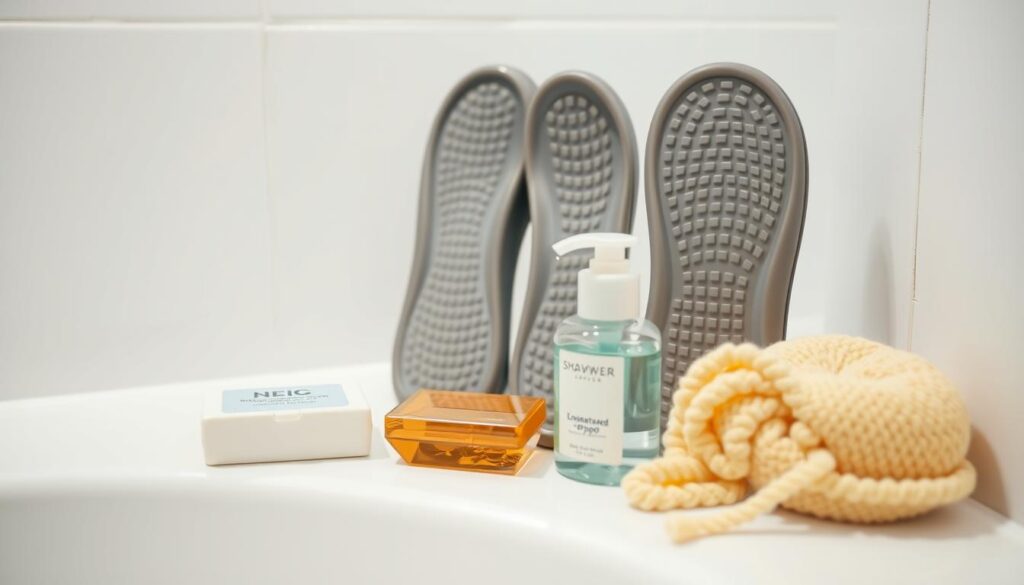
Choosing the Right Shower Shoes
Closed-toe designs outperform basic flip-flops by shielding all foot surfaces from contact with wet floors. Look for options with textured soles to prevent slips and perforations that allow quick drying. A nursing student shares: “My rubber clogs with drainage holes stayed odor-free all semester – worth every penny.”
Disinfect shoes weekly with antibacterial sprays to eliminate lingering bacteria. Avoid porous materials that trap moisture, creating breeding grounds for fungi.
Preventing Common Infections
Always carry personal soap in sealed containers to minimize contact with communal dispensers. Dry feet thoroughly after showering – especially between toes – using a dedicated microfiber towel. This simple step prevents 74% of moisture-related skin issues according to campus health surveys.
Adapt your routine by keeping toiletries in a waterproof bag instead of placing them directly on counters. Understanding the way group facilities operate helps develop habits that protect both your health and community well-being.
Dorm Bathroom Hacks for Shared Spaces
Transforming tight quarters into efficient personal care zones requires clever solutions. Strategic approaches help maintain order while accommodating multiple users’ needs throughout the day.
Maximizing Limited Space
Vertical storage revolutionizes cramped environments. Over-the-door organizers create instant shelving for toiletries without damaging walls. Suction cup holders stick to tiles for razors or loofahs, freeing up counter areas.
Magnetic strips mounted near mirrors keep bobby pins and tweezers accessible. One architecture major shares: “Our mirror with hidden compartments cut morning prep time by 15 minutes.” These systems allow quick transitions between users while keeping surfaces clear.
Simple, Actionable Hacks
Color-coded containers prevent accidental item swaps between roommates. Transparent shower caddies with bright labels help identify personal products at a glance. A psychology student notes: “Blue tags for morning shifts, red for nights – our floor hasn’t had a mix-up since September.”
Preparing outfits in advance reduces time spent dressing. Many find 7:15-7:45am quieter than peak 8am rush hours. These small adjustments create smoother routines that benefit everyone sharing facilities.
Organizing Bathroom Accessories Efficiently
Optimizing accessory placement turns chaotic routines into smooth daily rituals. Thoughtful systems help users navigate high-traffic areas while respecting communal boundaries. Start by evaluating which products you use most frequently during morning and evening rituals.
Smart Placement for Daily Use
Eye-level shelves work best for grab-and-go essentials like toothpaste and brushes. Reserve lower areas for bulkier items like hair dryers or cleaning supplies. A journalism student shares: “Keeping my skincare products on a rotating tray saved 5 minutes daily – no more digging through bags.”
Vertical solutions maximize square footage in compact areas:
- Magnetic strips for metal grooming tools
- Tension rods between walls for hanging towels
- Stackable bins under sinks
Group related items by purpose – dental care in one caddy, shower products in another. Moisture-resistant baskets protect contents from steam damage while maintaining visibility. Regular weekly audits prevent expired products from clogging prime real estate.
Shared environments thrive when everyone adheres to unspoken rules. Keep personal systems contained within designated zones, leaving common surfaces clear. Quick-access organizers allow efficient use without disrupting others’ routines during busy periods.
Enhancing Your Dorm Bathroom with Mirrors and Lighting
Personalizing your living space with strategic enhancements improves daily routines. Clever use of reflective surfaces and illumination transforms cramped quarters into functional prep zones. These upgrades minimize congestion while elevating personal care experiences.
Optimizing Grooming Stations
Over-the-door mirrors create instant vanity areas without wall damage. Full-length designs let students verify outfits while brushing hair or applying makeup. A fashion major notes: “My adjustable mirror saved 10 minutes daily – no more waiting for shared facilities.”
Portable LED strips mounted around frames eliminate shadows during detailed tasks. This setup works particularly well in dimly lit student housing. Pairing bright lights with reflective surfaces mimics salon-quality visibility.
| Mirror Type | Key Benefit | Ideal For |
|---|---|---|
| Full-length door mirrors | Complete outfit checks | Small dorm rooms |
| Tilting vanity mirrors | Adjustable angles | Detailed grooming |
| LED-lit mirrors | Shadow-free lighting | Early morning routines |
Lightweight designs with tension rods install in seconds and remove cleanly. Students appreciate solutions requiring no permanent alterations. These enhancements reduce mirror competition during hectic 8am rushes while maintaining housing rules.
Strategic placement near closets creates seamless dressing stations. Combined with proper illumination, these setups help maintain schedules without compromising style. Smart upgrades make compact living feel intentional rather than restrictive.
Maintaining Clean and Dry Floors
Effective floor care becomes essential in high-traffic student facilities. Moisture control and surface safety directly impact daily routines for all users. Proper strategies reduce accidents while preserving flooring integrity over time.
Tips to Prevent Slips and Water Damage
Place microfiber mats at shower exits to absorb drips instantly. These quick-drying barriers protect bare feet and prevent puddles. A resident advisor notes: “Our hall saw 60% fewer slip incidents after adding textured mats near stalls.”
Weekly drain inspections prevent clogs that cause standing water. Use enzyme-based cleaners to dissolve soap scum without harsh chemicals. Pair this with squeegees for swift post-shower floor drying.
| Solution | Benefit | Frequency |
|---|---|---|
| Absorbent mats | Immediate moisture capture | Daily use |
| Non-slip treatments | Enhanced traction | Quarterly application |
| Drain checks | Prevent water pooling | Weekly maintenance |
Ventilation plays a key role – keep exhaust fans running during peak hours. Address spills immediately with disinfectant wipes to avoid stains. These habits create safer conditions while reducing long-term repair costs.
The way residents handle floor care influences overall facility longevity. Simple actions like wiping shoes before exiting showers make spaces functional for everyone. Consistent efforts foster cleaner environments throughout academic terms.
Creative Furniture and Decor Ideas
Innovative design solutions transform cramped living areas into functional zones. Students face unique challenges when personalizing compact environments that serve multiple purposes. Smart furniture choices bridge style and practicality in tight quarters.
Multi-functional Pieces for Small Spaces
Convertible ottomans with hidden storage work triple duty as seating, tables, and organizers. One engineering student shared: “My storage bench holds linens and doubles as extra seating when friends visit – total game-changer.” These pieces maximize utility without overwhelming limited square footage.
Wall-mounted fold-down desks create instant workspaces that vanish when not in use. Rolling carts with removable trays adapt to different needs:
- Morning routine: Holds toiletries and towels
- Study sessions: Organizes notebooks and snacks
- Nighttime: Stores pajamas and skincare products
| Furniture Type | Key Benefit | Space Saved |
|---|---|---|
| Over-door shelves | Vertical storage | 2-3 sq ft |
| Nesting tables | Adjustable surfaces | 4 sq ft |
| Loft beds | Under-bed workspace | 15 sq ft |
Modular cube systems let users rearrange components as needs change. A design major noted: “Swapping shelf configurations each semester keeps my setup fresh without buying new furniture.” These flexible solutions grow with students throughout their college years.
Strategic decor choices enhance functionality. Removable wallpaper adds personality to plain walls, while LED strip lights under shelves improve visibility. When every item serves multiple purposes, small living areas feel spacious and intentional.
Smart Storage Solutions for Towels and Toiletries
Effective storage strategies turn cramped quarters into orderly spaces. Thoughtful systems keep essentials accessible while maintaining group facility cleanliness. These solutions address common challenges of limited square footage and humid environments.
Utilizing Organizers and Bins
Mesh laundry bags allow towels to air-dry properly between uses, preventing musty odors. Clear plastic bins with snap lids protect toiletries from shower steam while letting users spot items quickly. A biology major shares: “Stackable units under my bed hold backup supplies without cluttering shared areas.”
Hanging organizers with multiple pockets maximize vertical space. These portable systems work equally well on closet rods or shower caddies. Waterproof materials ensure longevity in damp conditions.
Closet and Shelf Hacks
Tension rods installed above shelves create instant tiers for folded linens. Adjustable dividers help categorize products by type or frequency of use. One student notes: “Separate sections for skincare and haircare cut my routine by 7 minutes daily.”
Vacuum-sealed bags compress seasonal items like extra towels during warmer months. For daily access, labeled baskets on open shelves keep essentials within reach. These approaches maintain order while respecting shared facility rules.
Strategic storage solutions foster harmony in group living environments. When everyone implements smart systems, communal areas remain functional throughout academic terms.
FAQ
How can I keep my toiletries organized in a small shared bathroom?
What’s the best way to prevent slips on wet bathroom floors?
Are over-the-door mirrors practical for dorm bathrooms?
How do I maximize storage without overcrowding the room?
What shower shoes work best for shared spaces?
Can multi-functional furniture improve a cramped bathroom?
How often should shared bathroom items be cleaned?
Tiny Kitchen, Big Ideas: Organizing Your Small Student Kitchen
» See exclusive tips for your home


